The jasmine plant (Jasminum) is a member of the Olive family. This genus unites about 300 species. Such a culture in nature can mainly be found in the tropical and subtropical zones of Africa, Australia and Asia. On the territory of the Mediterranean and South America, one type of jasmine is found. This culture is represented by shrubs and vines, which are deciduous and evergreen. Unpaired or trifoliate leaf plates are alternately or oppositely located. Flowers grow at the top or on the sides of the plant, they can be single or collected in corymbose or umbellate inflorescences. The saucer-shaped corolla can be colored white, yellow, and less often pink. The throat of the cylindrical tube of the rim is open. In order not to confuse jasmine with the mock orange, which is part of the Kamnelomkovy family, it is also called "real jasmine". However, these plants also have something in common, namely the scent of their flowers. Such a culture will feel great both in the house and in the winter garden. Jasmine is a flowering plant, most often it is ampelous. The lower part of the bush after a while becomes lignified, while the upper part is represented by thin shoots that may need support.
Content
- 1 Brief description of cultivation
- 2 Home care for indoor jasmine
- 3 The healing properties of jasmine
- 4 Diseases and pests of jasmine
- 5 Jasmine species with photos and names
- 5.1 Jasmine Bissa (Jasminum beesianum)
- 5.2 Jasmine (Jasminum nudiflorum)
- 5.3 Jasmine grandiflorum (Jasminum grandiflorum)
- 5.4 Jasmine officinalis (Jasminum officinale)
- 5.5 Jasmine multiflorous (Jasminum polyanthum)
- 5.6 Jasmine low (Jasminum humile var.glabrum)
- 5.7 Jasmine folded (Jasminum humile var.revolutum)
- 5.8 Jasmine sambac (Jasminum sambac), or Arabian jasmine
- 5.9 Jasmine finest (Jasminum gracillimum)
Brief description of cultivation
- Bloom... Flowering duration is about 20 days. However, the timing of flowering directly depends on the type of jasmine.
- Illumination... The light should be bright and diffused.
- Temperature... During intensive growth - from 18 to 24 degrees, in winter - about 10 degrees.
- Watering... From spring to autumn, the plant should be watered sparingly after the top layer of the soil mixture dries. With the onset of autumn, a gradual reduction in watering is carried out, and in winter, the substrate is moistened only so that the clod of earth does not dry out completely.
- Air humidity... It should be elevated.Before flowering and after the bush has faded, it must be moistened from a sprayer using water at room temperature. Moreover, during the flowering period, jasmine must be placed on a pallet filled with moistened expanded clay. When a plant has a dormant period, it is not moistened with a sprayer.
- Fertilizer... During the growing season, feeding is carried out 1 time in 2 weeks, alternately using organic matter and mineral fertilizers for this. In autumn, the bush is fed less often, namely, once every 4 weeks. In winter, no feeding is carried out.
- Dormant period... From late autumn to spring.
- Transfer... In springtime, young bushes - once a year, and adult specimens - once every 2-3 years.
- Soil mixture... It should include sand, coniferous, leafy and peat soil (1: 2: 2: 2).
- Reproduction... Cuttings.
- Harmful insects. Aphids, spider mites, scale insects, mealybugs and whiteflies.
- Diseases... If the plant is improperly looked after, then it can rot or all the foliage will fly around it.
- Properties... In alternative medicine, jasmine is considered a medicinal plant. But it should be borne in mind that it has a pungent odor, which can cause headaches.
Home care for indoor jasmine
Illumination
Jasmine needs a lot of bright light, but at the same time it must be diffused. It should be noted that the bush must be protected from direct sunlight. If the bush is placed on the southern windowsill, then the sunlight must be scattered using a film or transparent cloth. If it is placed on a north-facing windowsill, then, most likely, the bush will not bloom, and its growth will become slower, the whole point is that it will feel a lack of light. Best of all, such a plant will feel on the windowsill of a western or eastern orientation. In spring and summer, when it is warm outside, the bush can be transferred to fresh air (in the garden or on the balcony), but at the same time it should not be exposed to direct rays of the sun, so the light must be scattered. With an increase in the level of illumination, the bush must be accustomed to new conditions gradually, otherwise burns may form on the surface of the foliage.
Temperature regime
Such a flower is not particularly demanding on temperature. However, in order for the flowering to be as effective and lush as possible, in winter it must be placed in a cool room. From spring to autumn, jasmine will feel best at a temperature of 18-24 degrees. And in order for flowering to come, in winter, the air temperature must be about 10 degrees. If in winter the flower is in an excessively warm room, then it will grow well and build up green mass, but such a jasmine will not bloom. In order to avoid this, the room where the flower is located must be systematically ventilated.
How to water
In the spring and summer, the bush must be watered with well-settled water, which should be slightly warmer than room temperature. This procedure is carried out immediately after the top layer of the substrate is thoroughly dry. After the onset of autumn, watering should be gradually reduced. If in winter the bush is kept in a cool room, then it must be watered in such a way that the earthen lump in the pot does not dry out completely, but it should not be poured.
Moisturizing
Jasmine needs high humidity. For spraying, use well-settled water. During flowering, the pot must be placed on a pallet, which is pre-filled with moistened pebbles or expanded clay. In winter, you should not moisturize jasmine from a spray bottle.
Bloom
Different types of jasmine bloom at different times of the year. Also, the color of the flowers, which can be white or yellow, also depends on the species.The flowers are star-shaped and are collected in several pieces or in racemose inflorescences. Indoor flowering lasts about 20 days. Moreover, in the last days of flowering, the flowers change their color to various shades of red. There are also species with slightly double flowers. In order for the bush to bloom as long as possible in the summer, it will need a pinch, while leaving no more than 8 pairs of leaf plates on the stems.
Pruning
Experts advise tying an adult overly large bush to a support, or it can be run, for example, in a closet. In the middle of winter, before the period of intensive growth begins, long stems must be shortened by a third. Also, in the middle of the plant, all underdeveloped, dried and thin branches must be removed. If done correctly, it will have a beneficial effect on the state of jasmine.
Jasmine transplant
Young bushes should be transplanted annually, and adult specimens less often, namely, once every 2 or 3 years. A suitable soil mixture should consist of sand, leaf and softwood soil, and peat (1: 2: 2: 2). This flower grows well in hydroponics too.
Jasmine propagation by cuttings
Reproduction by cuttings is carried out at a temperature of about 20 degrees. In spring, ripe stems are taken for cutting cuttings, and in summer green shoots are suitable for this purpose. For cutting cuttings, you should choose shoots growing on the tops of the branches, while they should be practically lignified and have 3 internodes. For rooting cuttings, you can use 2 types of soil mixture:
- sand and leafy earth (1: 1);
- river sand and peat (1: 1).
For rooting to be successful, bottom heating is needed. The cuttings should give roots after 5-6 weeks, then they will need to be transplanted into separate, not very large containers filled with a soil mixture, which includes sand, turf, peat and deciduous soil (1: 3: 1: 2). When the roots completely surround the container from the inside, the bush must be transferred into a pot, reaching about 11 centimeters in diameter. For the first two years, jasmine will need an annual transplant.
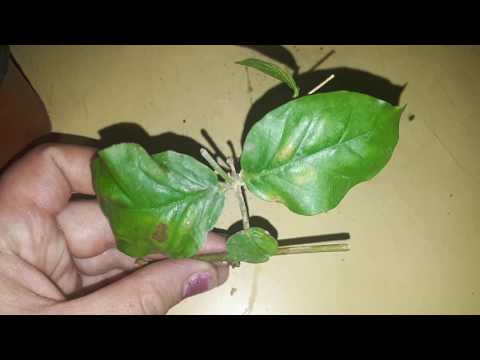

Watch this video on YouTube
Virulence
During the lush flowering of a large jasmine bush at night, it must be taken out of the bedroom if it is standing there, otherwise its smell can cause a headache.
The healing properties of jasmine
Jasmine foliage is used to stop lactation, and it can also lower body temperature. Hot compresses are made from such a plant, which can be applied to ulcers on the skin. The raw root of this flower is used as a pain reliever for fractures, and it can also help with headaches and insomnia. Young foliage is used in salads as a seasoning.
Diseases and pests of jasmine
Possible problems
The jasmine foliage shrinks, twists and dries, and then it begins to fly... Most often this is due to the fact that the humidity in the room is too low, or due to too poor watering, and this can also happen if the bush is exposed to direct sunlight. The bush is removed in a shaded place or shaded. The foliage can be moistened with a sprayer, however this should not be done during flowering.
Harmful insects
Aphids, scale insects, spider mites, whiteflies and mealybugs can cause the greatest harm to indoor jasmine.
Jasmine species with photos and names
Jasmine Bissa (Jasminum beesianum)
In nature, this species can be found along the banks of rivers, and also in the Western Chinese mountains at an altitude of 2500 m above sea level. It is represented by lianas, shrubs or evergreens. In length, such a jasmine can reach about 200 cm. There are longitudinal grooves on the surface of the shoots. Simple opposite leaf plates of a dark green color are pointed at the apex and have an ovoid or lanceolate shape.Their length is about 50 mm, and there is slight pubescence on both surfaces of the plate. Blooming is observed in May. Fragrant flowers reach 13-17 mm in diameter, they can be painted pink or dark pink. Flowers grow in the upper part of the shoot and can be either single or collected in bunches of 2 or 3 pieces.
Jasmine (Jasminum nudiflorum)
This species is represented by weakly branching shrubs. The long drooping shoots have a small amount of foliage. Not very large trifoliate leaf plates have a rich green color. In winter, part of the foliage flies from the bush. This species is also called "winter jasmine", this is due to the fact that its flowering begins in the middle of the winter period, and the bush fades in the middle of spring. Large flowers grow along the entire stem from the leaf sinuses, their color is similar to the color of egg yolk.
Jasmine grandiflorum (Jasminum grandiflorum)
Such shrubs, vines and evergreens have bare stems that can be up to 10 meters long. The color of opposite leaf plates is variegated. No more than seven elliptical leaflets grow on the plate, which have a pointed apex, their length is no more than 30 mm. Umbrellas are placed on the tops of the stems, they consist of no more than 10 large, fragrant white flowers. This species blooms in June – October. The flowers of this plant are placed in tea for scent.
Jasmine officinalis (Jasminum officinale)
The species is represented by perennial shrubs. Thin smooth long angular branches adorn two- or three-paired leaf plates. The front surface of the foliage is rich green, and the back is pale green. The shape of smooth leaf plates is elongated-lanceolate with a pointed apex, their edge is pubescent. Bloom is observed in April. Fragrant white flowers with long pedicels are collected in umbrella-shaped inflorescences.
Jasmine multiflorous (Jasminum polyanthum)
The height of such a weakly branching shrub is about 200 cm. Its stems are curly. Oval dark green leaf plates have a wavy edge and a pointed tip. A large number of flowers grow in the upper part of the stems. They are collected in bunches of 3-5 pieces, the flowers themselves are narrow-tubular with a limb of 5 lobes. The color of the buds is pink. In this species, the flowers have the most pungent odor.
Jasmine low (Jasminum humile var.glabrum)
In nature, such a plant is found in the mixed forests of the subtropical part of Western China at an altitude of 1000–2500 m above sea level. This species is represented by shrubs or evergreens. The height of the bush with bare shoots is about 200 cm. The length of the trifoliate leaves is up to 25 mm, they can include no more than 7 ovoid or elliptical leaves. The front surface of the foliage is dark green, and the back is pale green. Umbellate inflorescences consist of several fragrant flowers. The yellow corolla of the flower reaches about 10 mm in diameter, like the corolla tube. This kind blooms in the summer.
Jasmine folded (Jasminum humile var.revolutum)
The shape of the leaf plates is ovoid, they grow in 5-7 pieces, and their length is about 60 mm. Multi-flowered inflorescences consist of flowers, reaching about 25 mm in diameter, while their tube length is also up to 25 mm.
Jasmine sambac (Jasminum sambac), or Arabian jasmine
The homeland of this species is the tropical regions of Asia. It is represented by lianas and evergreens. On the surface of the bushes, consisting of thin shoots, there is pubescence, represented by fine hairs. Shoots are about 6 meters long. The leaf plates are placed oppositely in 2 or 3 pieces, their length is about 100 mm, and the shape is ovoid. Most often, the leaves are rounded at the base, while their apex is pointed or obtuse, and their surface may be slightly pubescent or bare. Umbellate inflorescences consist of several semi-double or double white flowers that have a pleasant smell.The bush blooms in early spring and fades in the middle of autumn. Flowers are placed in tea for scent.
Jasmine finest (Jasminum gracillimum)
Or multiflorous jasmine (Jasminum multiflorum). It occurs naturally in the mountainous regions of the northern part of Kalimantan Island. The species is represented by lianas, shrubs or evergreens. There is pubescence on the surface of thin shoots. Simple opposite oval-lanceolate leaf plates are about 35 mm long. The plates at the base have a heart-shaped shape and have a pointed apex, their seamy surface is pubescent. Fragrant large flowers are white. This jasmine blooms in January – March.
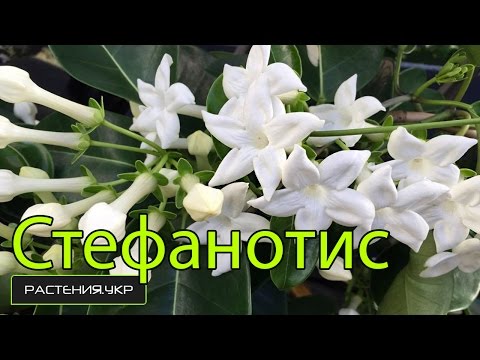

Watch this video on YouTube

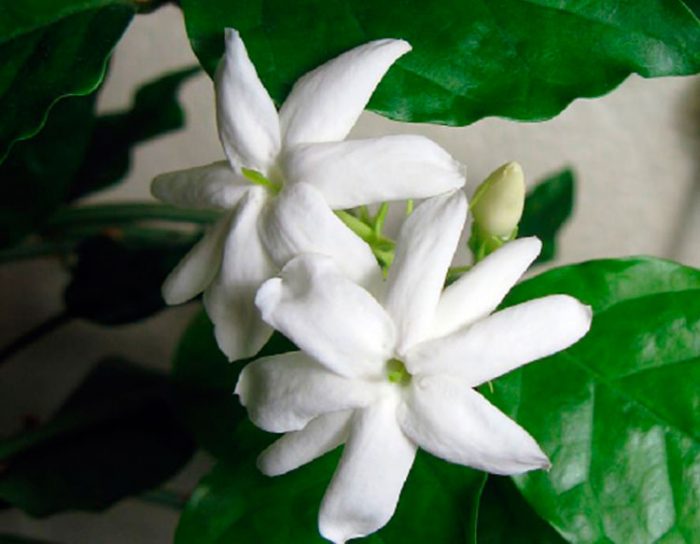
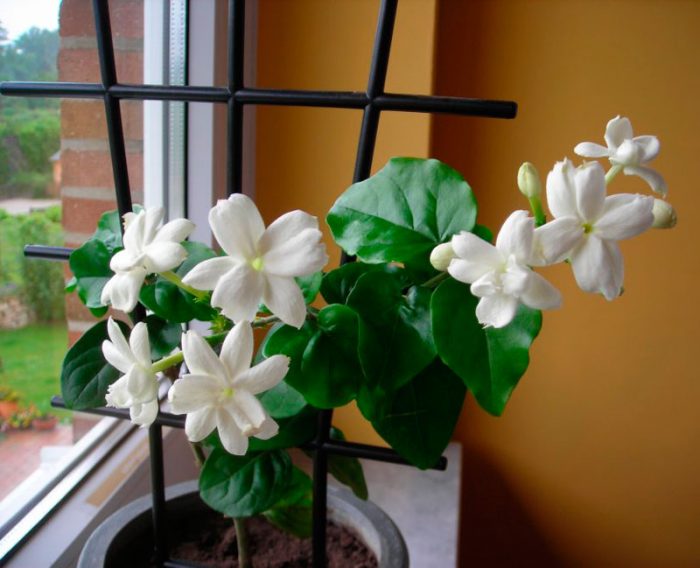
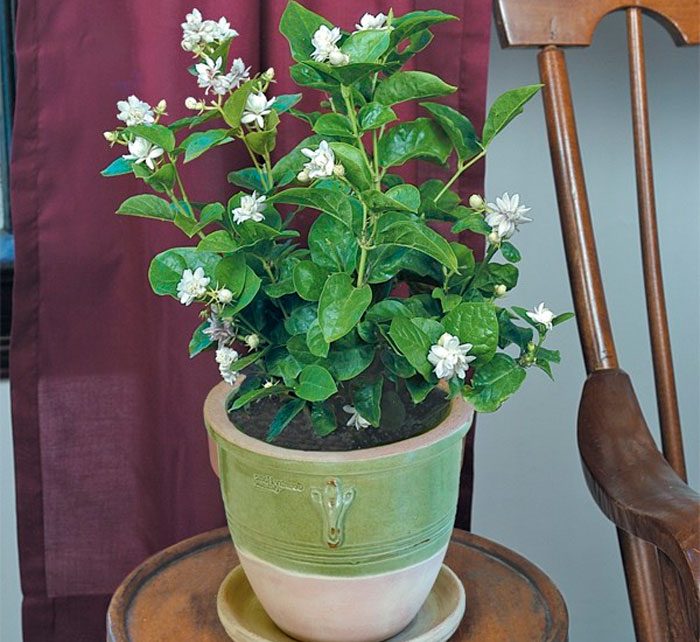
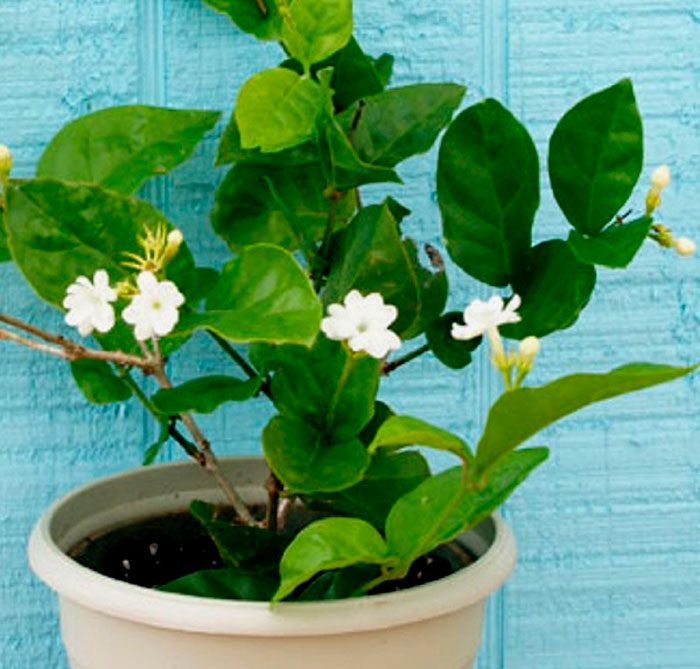

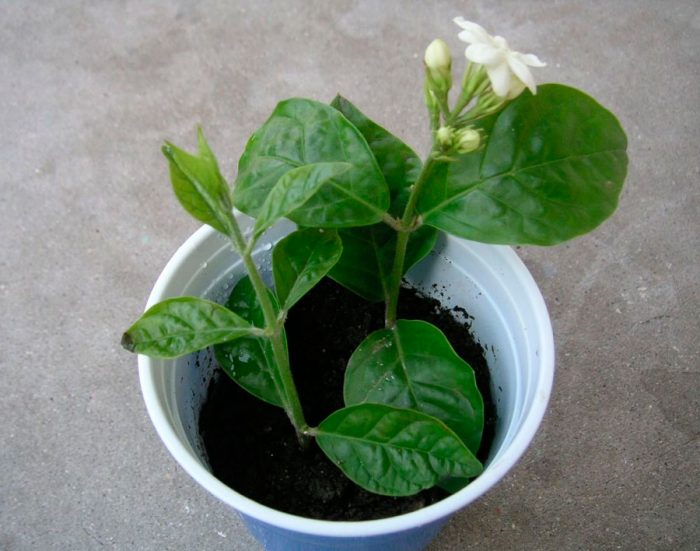

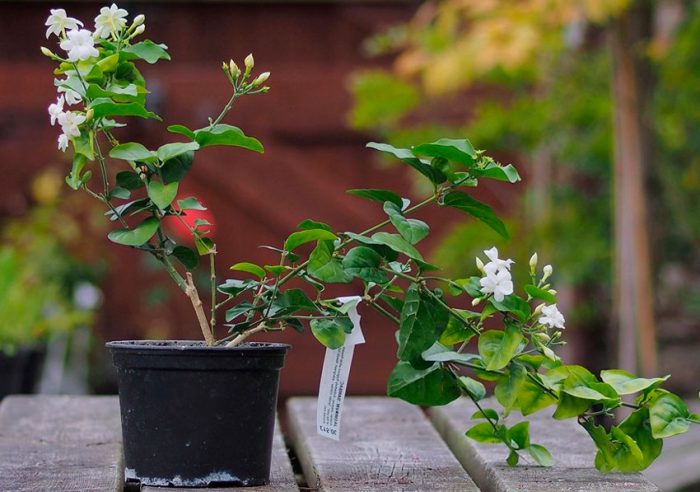

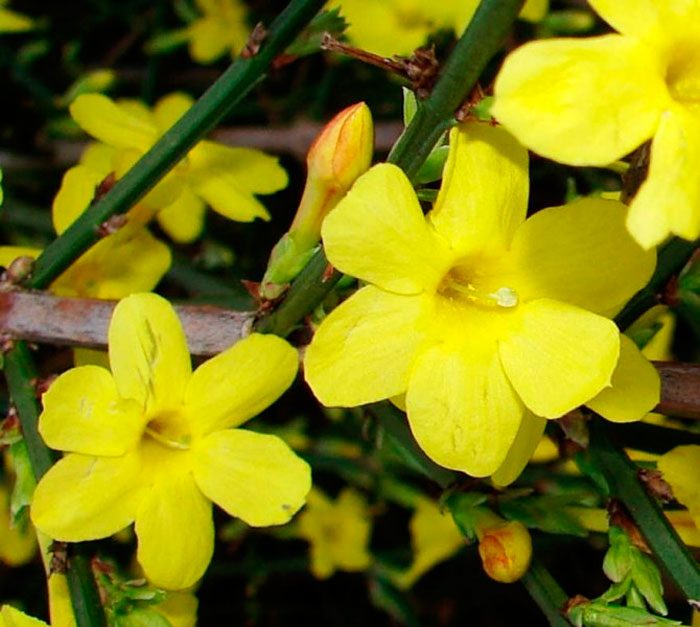

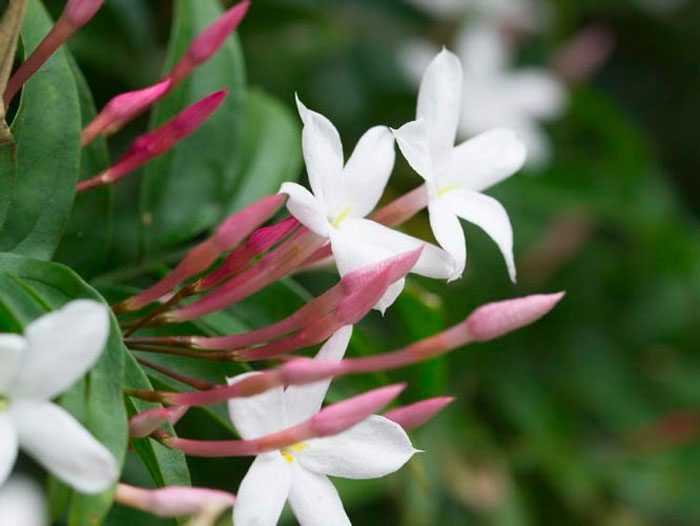
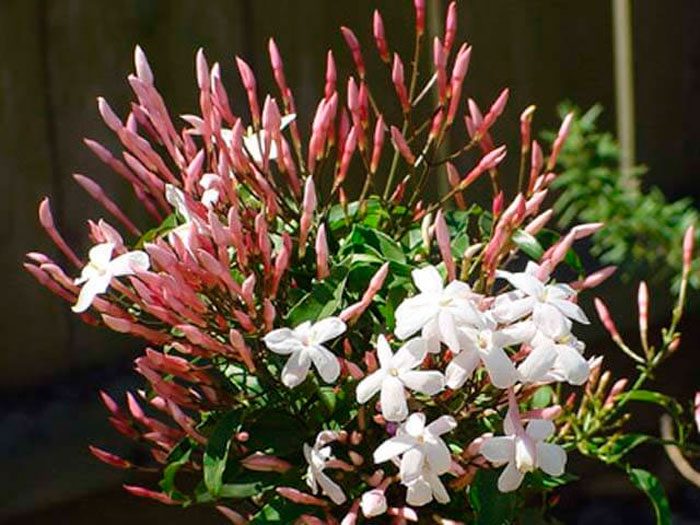

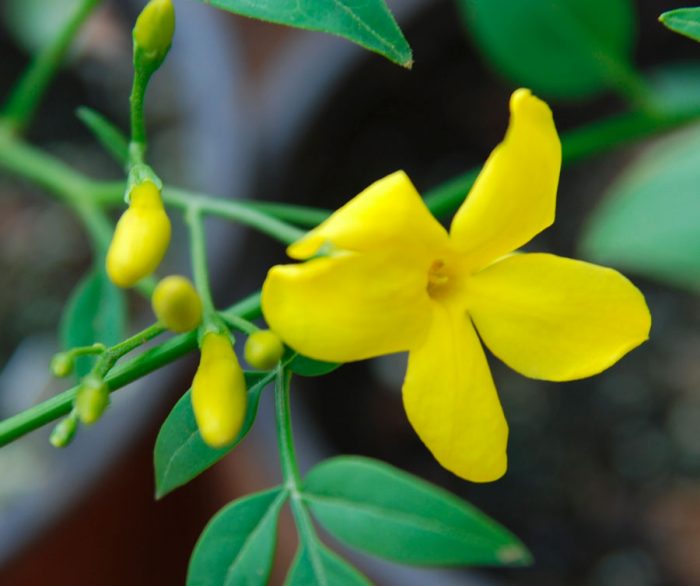
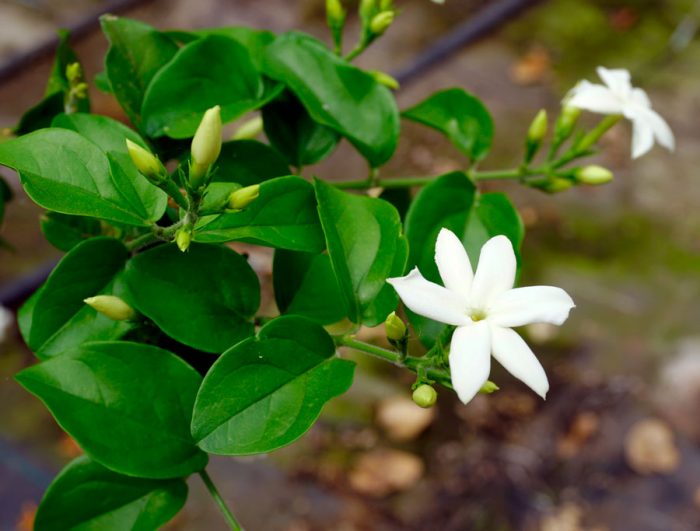
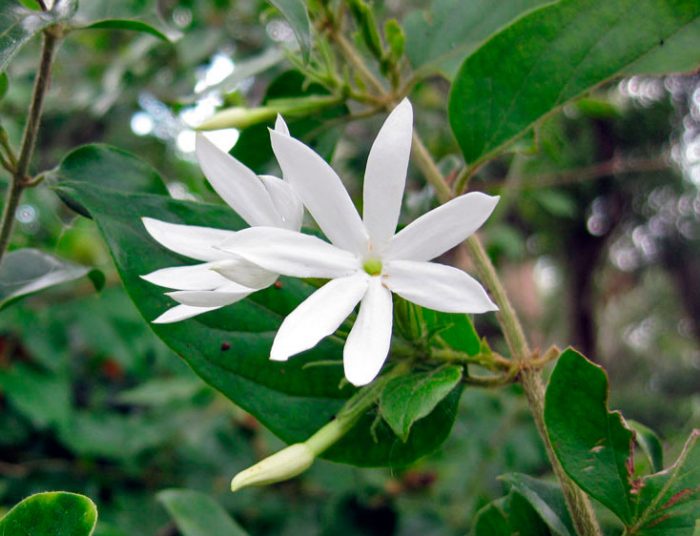
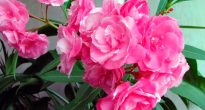

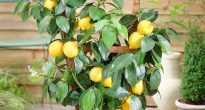

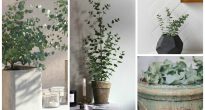

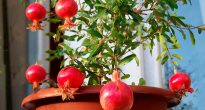



I live in South India, and in our area sambac jasmine is grown in large quantities. It is used for temple offerings and is used to decorate a woman's hair with garlands of jasmine. In this case, the hair retains its aroma for 2-3 days. It is also considered an aphrodesiac, the scent of jasmine excites men, therefore, jasmine garlands are abundantly decorated with both the groom and the bride at the wedding. Therefore, it is very strange to read here that jasmine can cause headaches. Nobody here has ever heard of such a thing. But the aroma of jasmine is capable of causing rapid and premature decay of mango fruits. Therefore, mangoes are kept away from jasmine. Jasmine is always collected from the bushes at the bud stage and in this form it is tied into garlands. After that, he, already being plucked, blooms. Such flowers are more beautiful in shape than those that opened on a bush. Jasmine from our area is also exported to Sri Lanka, Singapore, Malaysia and the Emirates.